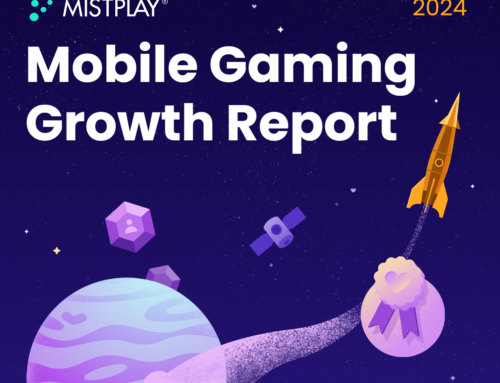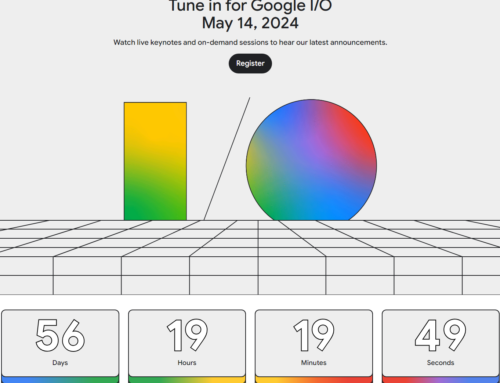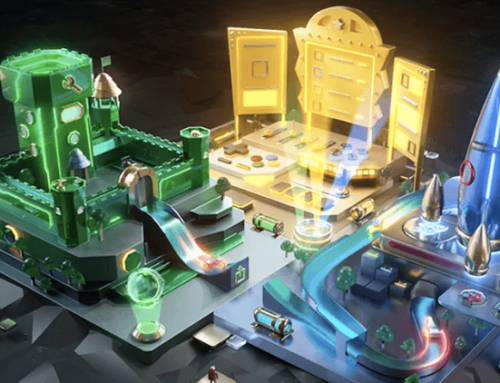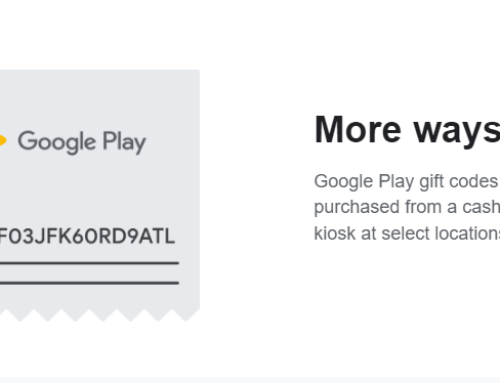There are 1.6 million apps in Google Play and around 22% are games, so roughly 350,000. A large number (won’t say majority though it might be) of them unfortunately suck. The reasons for poor quality games are multiple, but here are some that cross my mind:
- it’s very easy to make poor games now (you don’t even need to know programming)
- it’s very cheap to publish a game on Google Play (pay $25 once and that’s it)
- a loooot of devs think that creating and publishing mobile games is just as playing the lottery, the more tickets you have the better chances
- Google Play doesn’t enforce an aggressive no-copycat policy (at least a few thousands are Flappy-something)
There are many more reasons but these are the main ones. Google doesn’t want to clean up the appstore because it is a numbers’ game, who has the most apps/games published (i.e. Android vs iOS). Users on the other hand are the ones losing here. Having to search through hundreds of thousands of mediocre games just to find the good ones is frustrating. So either they settle for whatever they find, or they keep searching. Either way the user loses time or has a poor gaming experience.
As an editor and quite the avid mobile game player I’ve toyed around with thousands of games and have a perspective of what’s wrong with poor games. If you are a mobile game developer this could help you fix your current games or help you serve as a guideline for future ones. Below is a list of the main things I dislike in some mobile games.
Intrusive Ads
You know the type, you open the game, barely have a chance to look around and BANG, one ad. Even worse is that I played games where before each level started an interstitial was shown and lasted about 30 seconds – which is exactly how much I’ve played that game for. My strong recommendation here is this, don’t put any ads in your game when you first release it unless you are a big game studio that has a channel powerful enough to drive tens of thousands of downloads.
Suggestions:
- Ads usually are a deterrent for users, especially if they are intrusive. Thus by including ads right from the beginning you reduce your chances of getting high reviews and more popularity. Sure there are exceptions such as Flappy Bird, but those are just that, exceptions.
- Most games upon the first few weeks or even months have low install numbers. Trust me when I say that if your game doesn’t get at least 1000 installs a day it’s not worth putting ads. Even with 1000 installs a day you’d only get a few bucks daily.
- You can always add the ads later. In fact this is my strongest recommendation, release a game without ads at all and only if you see it starting to gain popularity send an update with ads in it. Don’t worry about existing users complaining, if they liked the game enough to keep it they’ll continue playing too.
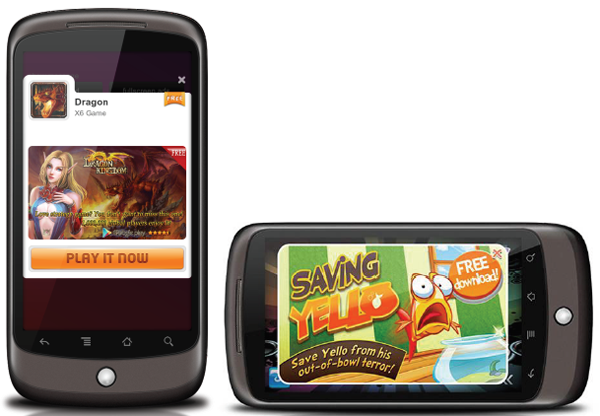
Intrusive interstitial ads
Monetization first, user experience … last
That’s a common error as well, in-app purchases everywhere and anytime. Think about user experience first, when users install a game what they’re eager to do is play it. They want to see if they like it. Instead, a lot of games show right from the very first use some in-app purchase promotions of some kind. So I don’t even know what the game is about and you’re forcing me to make a purchase? I’ll uninstall your game faster than you could say Ka-Ching!
A game that understands IAP and does it correctly, or at least did initially, is Crossy Road. They offer IAP to unlock a character that doesn’t affect the game in any way, it’s just eye candy. I’d support that type of game just because I like its non-intrusiveness.
Suggestions:
- Don’t add IAP right from the first release of your game. You can add it later if the game gains traction.
- Go on the route of soft IAP, not intrusive ones. I find intrusive the one type of IAP that affects the gameplay. Think about Clash of Clans, the most sucky game of all in terms of IAP. If you don’t buy something you can basically play for five minutes then wait a couple more hours. That’s intrusive and one of the main reasons I still think Clash of Clans sucks.
- While adding IAP that limit the game’s playability is wrong, you don’t want to be on the other extreme of adding IAP for items that aren’t basically needed. Don’t add IAP for the sake of having them, “just in case” your game is the next-next Flappy Bird. I’ve seen games that had some totally unrelated IAP offers, so do some feature usage statistics before deciding to pick some items for IAP.
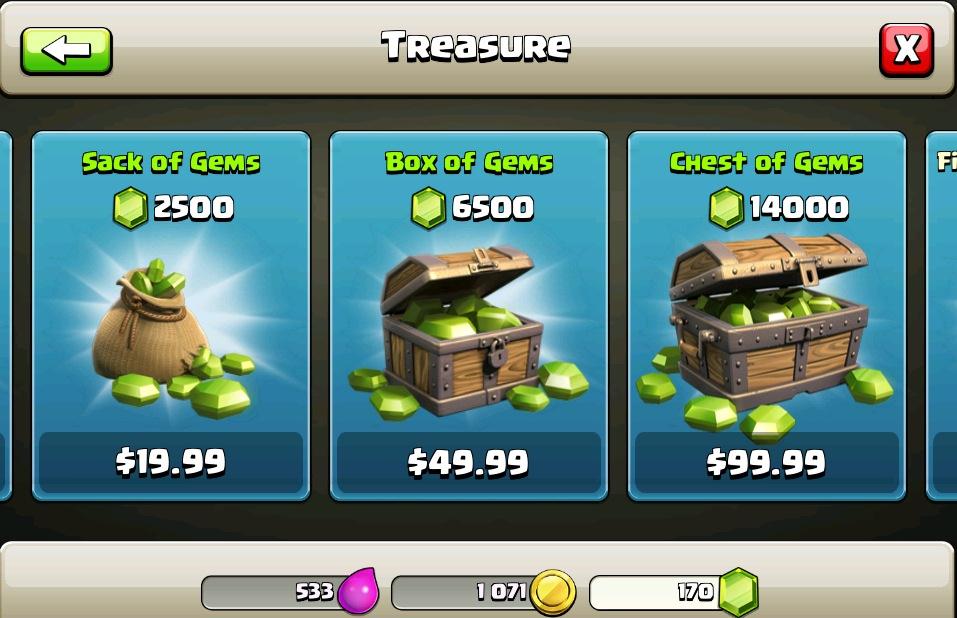
Clash of Clans is a bad example for IAP
Signin Notifications
I hate signin prompts so much that no matter what the game is about I uninstall it if something prompts me for my acceptance BEFORE I even play the game. The most common signin prompts are those for using or connecting Google Play Services, usually in tandem with enabling Achievements or Leaderboards. As a game dev think about this scenario, first your user discovers your Google Play page and must DECIDE if the game is good to be installed. Next they must DECIDE if they accept the permissions your game needs. Then when they finally start the game they must DECIDE to accept yet another connection prompt.
Here are my suggestions:
- Never require a login/connection/acceptance before the game starts. I know that Google recommends you to prompt users to signin to avoid API errors, but you shouldn’t sacrifice your users for this. A solution is to program your game in such a manner so that a prompt only shows if the user taps intentionally on the Leaderboard/Achievement button where you actually make the API call. It’s very easy to test how things work, just logout from Google Play Services and try your game.
- Facebook/Twitter/G+ and other login or connection prompts fall in the same category of things your game shouldn’t do. I know that the value here is sharing notifications about your user to their friends, but you should reward your users for this, not punish them. So instead of automatically forcing them to connect their social accounts or prevent them from playing the game before they do, you should encourage them to connect. If they connect you could offer them added value such as bonus items or the simple fact that their game profiles will be saved and synced. Want to see this nicely implemented? Try Sky Force 2014, they have a non-intrusive Facebook/G+ connect button that gives players the benefit of competing against their friends and also syncing game progress.
- Decision taking is like a muscle, the more you use it in a day the more “tired” it will get. So what your game must do is ask them to make less decisions, not more. Or at least force them to make a decision after they already played your game and they decide to invest more time in it.
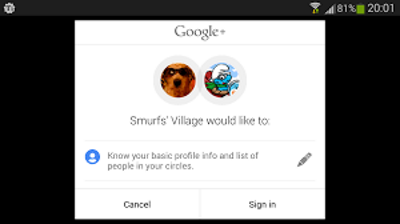
Would you like to… no thanks
Poor Graphics
As a player I believe KISS – keep it simple, stupid – is the best principle a dev could apply in designing mobile games. Simplicity is the key to many successes in the game world but that never should equal poor quality. I’ve seen game designs that look horrible and they scream poor design. I honestly have no idea what the dev was thinking when releasing those, is it really worth the effort in releasing something that looks awful? Suggestions:
- Don’t release a game with poor graphics. If you think your game idea is great and it is worth investing in you can either hire a designer to create the art or find cheaper resources online. The downside for buying royalty free graphics is that other games might use the same graphics, but this is still better than releasing a game with poor quality art.
- If you don’t trust your own design taste then ask some of your friends/family to assess the quality of your game. If they’re true friends you’ll get some honest feedback and you’ll know if the game art sucks.
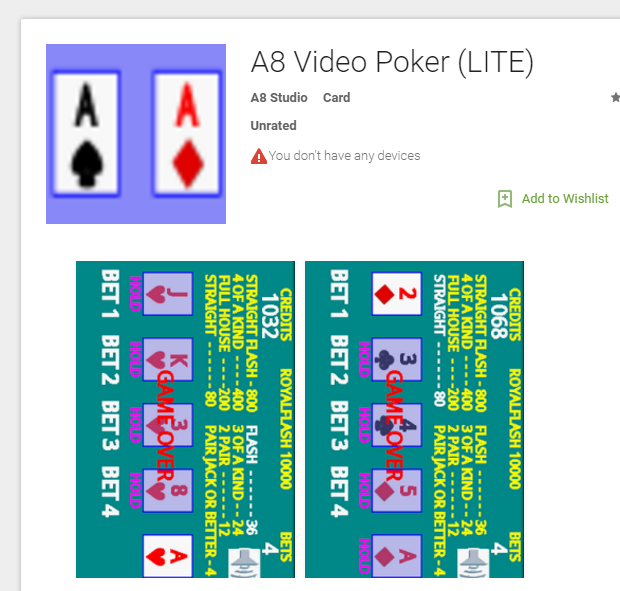
Real screenshot from a published game… there are no words
Yet another copycat
Really, how many flappy bird clones do you think can become popular? Apparently there are thousands and thousand more variations mainly due to how easy it is to copy something that’s popular. Don’t do that, better try your own idea – or a variation of another one – and fail than simply copying someone else’s idea. Suggestions:
- If you lack inspiration try looking at very old Arcade games for an idea. There are also games that belong now to the public domain so no copyright issues to use them as inspiration. Just a note here, don’t just copy the original design, try to come up with something different that improves the gameplay a bit or brings it up-to-date with current trends.
- Don’t risk being banned. Google Play has strict copyright rules and even an automatic algo for detecting infringement, so don’t toy around with this. You can risk not only having your game unlisted but having your entire Google Play account banned.
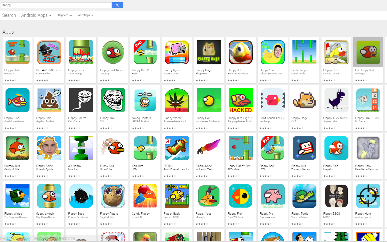
Flappy clones everywhere
Bugs, I see bugs everywhere
Fragmentation is a bitch, that’s a fact. But this doesn’t mean you should release a game full of bugs just because it is too difficult to test it out. Amazon offers a testing environment service at decent prices and this will let you test your game on multiple devices. Choose at least a couple popular ones and see how the game behaves. The no. 1 reason for bad reviews is represented by bugs, a user that cannot install your game due to an error or encounters fatal errors during play will give a 1-star rating for sure. Suggestions:
- Beta test. You can beta test your game and share private access to it on Google Play. Start with friends and family. Create a G+ community and invite others to beta test your game.
- Emulators. Try your game on emulators as well, for instance on Bluestacks. The most accurate thing to do here would be to test via a service such as the Amazon AWS Device Farm that lets you test your app on hundreds of devices for as little as 20 cents per device-minute.
- Release often. Don’t overdo it though, meaning don’t postpone the release date of your game over and over just because you don’t think it’s perfect yet. Correct the major and annoying issues and release it.

Unfortunately … has stopped
Complicated controls
Some developers forget the fact that users must play on a small device and try all sort of complicated controls. Buttons on the left, buttons on the right, swipes, special taps and so on. I understand that some games are complex and require special controls, but without simplicity all of them will fail. If something is difficult to play using the given controls, it will at most be a niche game playable by those that are really passionate for that kind of game. If you are targeting broad use and popularity, keep it simple. The simple the controls are, the better. Ever thought that maybe Flappy Bird’s success was based on the fact that it had the most easy control ever, a simple tap?
Leo’s Fortune handles 2-finger controls formidably, for a platformer is very difficult to have a jump action but they found a way to make this a breeze.
Suggestions:
- One hand controls. Try to keep your controls to a minimum and playable with a single hand. Reason for this is the fact that some users hold the phone with one hand while playing with the other.
- Train your users. If you must use more than one control, offer a train level for your users to understand better how to play it. Don’t throw them right in the middle of the action without any clear idea on how they should play the game.
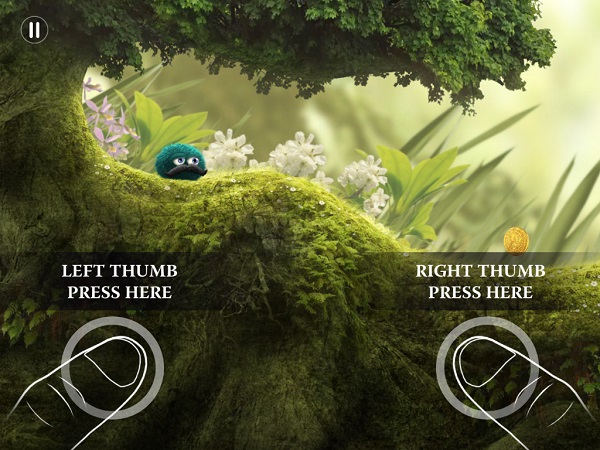
The best example for 2-finger controls.
Are you a gamer and have something to add? Just leave a comment with what irks you the most in mobile games to help developers understand how they can make better games. Afterall, gamers are from Mars and game developers are from Venus.

